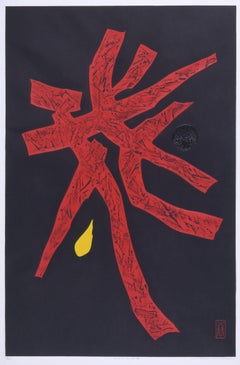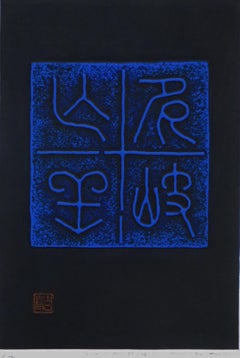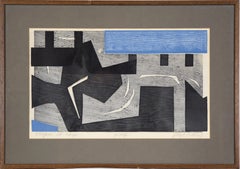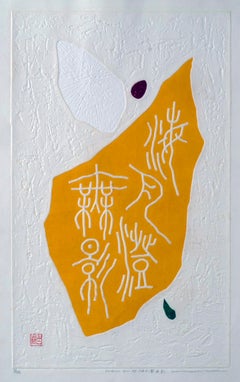Haku Maki Art
Maki Haku is the artistic name of Maejima Tadaaki, who was born in Ibaraki Prefecture. He was a sōsaku-hanga artist in the 20th century. During World War II, he was trained as a kamikaze pilot in the Japanese air force, but the war ended before he was assigned a mission. Haku had no formal art training but studied for two years with the sōsaku-hanga artist Onchi Kōshirō. In 1962, he started adding texture to his prints. In 1965, he began embossing designs into an unprinted paper by using a press to transfer a design created in cement on a carved plywood board and then adding color with stencils. Maki Haku participated in the Tokyo International Print Biennale in 1957–60. The Art Institute of Chicago, the Cincinnati Art Museum, the Honolulu Museum of Art, the Los Angeles County Museum of Art, the Museum of Fine Arts in Boston, the Museum of Modern Art in New York and the Philadelphia Museum of Art are among the public collections holding prints by Maki Haku.
1970s Abstract Haku Maki Art
Woodcut
1970s Abstract Haku Maki Art
Paper, Woodcut
Late 20th Century Abstract Haku Maki Art
Woodcut
1960s Abstract Geometric Haku Maki Art
Paper, Ink, Woodcut
2010s Abstract Haku Maki Art
Paper, Woodcut
1970s Abstract Haku Maki Art
Paper, Woodcut
1990s Abstract Haku Maki Art
Printer's Ink, Woodcut, Archival Ink, Archival Paper, Archival Pigment
1970s Abstract Haku Maki Art
Woodcut, Paper
1960s Abstract Expressionist Haku Maki Art
Woodcut
21st Century and Contemporary Abstract Haku Maki Art
Paper, Woodcut
2010s Abstract Haku Maki Art
Ink, Archival Paper, Woodcut
1970s Abstract Haku Maki Art
Paper, Woodcut
Early 2000s Abstract Haku Maki Art
Paper, Linocut, Woodcut
Late 20th Century Abstract Haku Maki Art
Woodcut
1970s Abstract Haku Maki Art
Woodcut
1970s Abstract Haku Maki Art
Woodcut
1970s Abstract Haku Maki Art
Woodcut
1970s Abstract Haku Maki Art
Woodcut
1970s Contemporary Haku Maki Art
Woodcut
1950s Modern Haku Maki Art
Woodcut
Mid-20th Century Abstract Haku Maki Art
Woodcut




